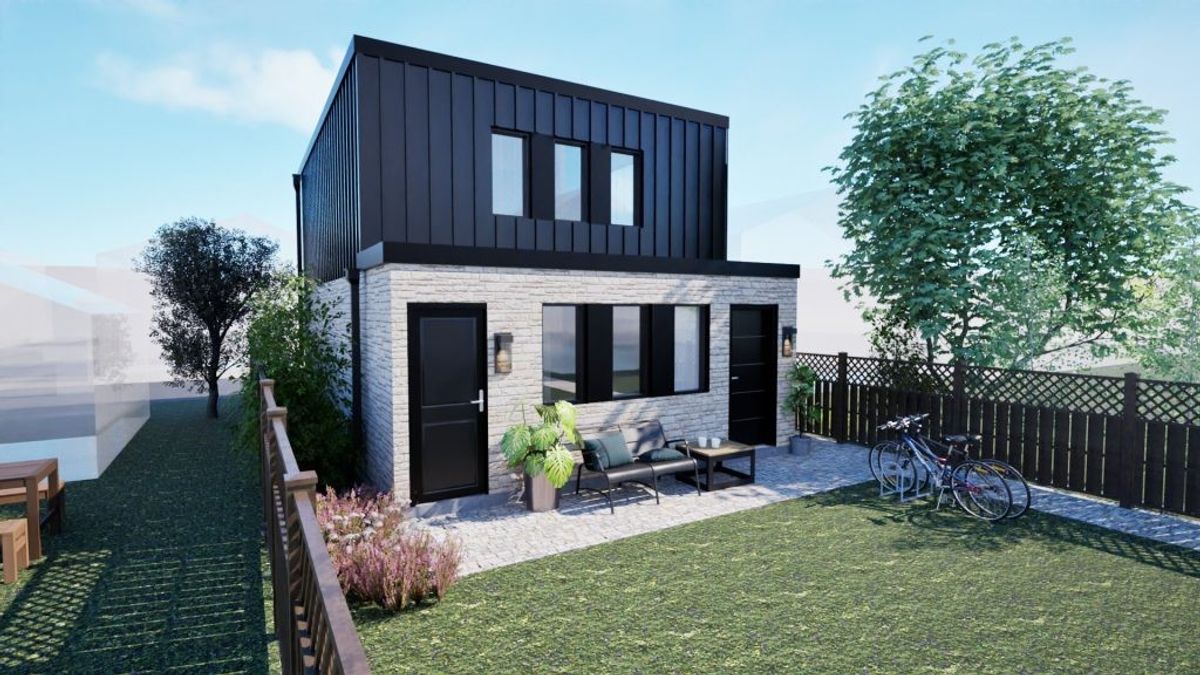No one questions that homelessness has reached crisis proportions in Toronto; the discussion now is about what to do. In Liberty Village, that debate has become personal. Ever since a “temporary” 24/7 respite centre opened in the parking lot of Lamport Stadium last December, the west end neighbourhood has been roiled by the facility and its users. Supporters say it is a desperately needed measure that will help the homeless survive the mean streets of Toronto. But critics argue that what’s good for the city is bad for the neighbourhood.
Liberty Villagers complain that the respite has led to increased crime and a growing sense of insecurity and fear among locals. They also report the streets around the shelter at near the corner of Fraser and Liberty are littered with trash and, more worryingly, used needles. They also resent the loss of dozens of parking spots.
As one resident said, she has been verbally harassed near the centre and feels nervous walking past it, especially at night. She also worries about the danger of discarded hypodermics. At the same time, the proprietor of a Liberty Village nail salon says that her shop has been broken into on three occasions since the shelter appeared, something that had never happened in her nine years of operation.
“I’m not going to sugar coat it,” says downtown councillor Joe Cressy, “respites are challenging. We’re dealing with people who are addicted and who have mental health issues. But we also have to make sure that neighbourhoods remain liveable and safe. It’s hard.”
The backdrop to the respite system is a city in which poverty rates are growing ever higher. Affordable housing, or rather the lack thereof, has become an issue that now affects middle-class as well as lower-income Torontonians. There are 181,000 people on the Toronto Community Housing waiting list. It will be years, more likely decades, before these people can expect to find accommodation. Before that can happen, thousands of affordable units will have to be built.
READ: Selling Surplus Land Is Gov’t’s Best Bet For Affordable Housing: Report
Despite this, Cressy points out that half the people using shelters will find housing within two months of entering the system. “For all intents and purposes,” he notes, “only 20 per cent of people using shelters are living in them.” They tend to be addicts and the mentally ill.
Still, the statistics are sobering; the homeless population that depends on shelters nightly has doubled from 4,500 to 9,000 in the last four years. This trend has been exacerbated by the cost of housing, the opioid crisis and growing poverty rates. The city’s $200-million plan to create 1,000 new shelter beds in three years is still being implemented. Respite sites are a temporary measure created to fill the gap until the new shelter facilities are in place. Unlike respites, which are open 24/7 and house up to 100 residents, shelters typically have between 40 and 60 people. Because shelters tend to be located in the existing building stock, they are indistinguishable. In other words, they are invisible. On the other hand, the Liberty Village respite is a huge tent-like structure that occupies space in a busy parking lot. It feels intrusive, even foreign and clearly does not belong. It’s also impossible to miss.
READ: The Four Catch 22’S Of Housing Insecurity For Low-Income Torontonians
To make matters worse, media coverage has tended to be inflammatory. Right-wing commentators paint Liberty Villagers as victims and respite users as villains. In many cases, even those sympathetic to the need to house the homeless want the shelter moved to some other neighbourhood.
Others don’t. “There are a lot of good stories,” insists semi-retired businessman and activist Richard Dunwoody, “but we don’t do a very good job of communicating them.” He frankly admits respite centres are a “band-aid solution,” but, he adds, they’re also badly needed.
“You can’t create housing for X number of people without encountering issues,” he points out. “It’s important to acknowledge that some of these concerns are real. Yes, there are needles on the streets, but what’s the actual number? We hired a non-profit organization to go around and pick up needles, but in the last month, the number of needles they found was in the single digits. Some people in the respite shoot up, but there are probably people in my condo who shoot up. Most people don’t realize that 45 per cent of the people in the shelter are immigrants and refugees, some of them women who were trafficked. Let’s sit down and have a half-day session and find solutions.”
READ: Gimme Shelter From The Shelter System: The Human Fallout Of Housing Insecurity
Dunwoody, founder of Project Comfort, the volunteer organization that advocates for the homeless, talks about how the Finnish handle the problem. The Nordic nation has reduced homelessness through a much-lauded program introduced in 2008. The initiative, Housing First, reverses the usual approach in which participants must progress through a series of steps to reach the goal of housing. Though conditions apply, the scheme guarantees housing to homeless on the assumption that starting with a place of one’s own better prepares the marginalized to pull themselves together, find work and re-enter mainstream society. The program is expensive – 250 million Euros – but given that the cost of homelessness is 15,000 Euros per individual, Finns believe the cost is justified.
It helps, too, that Helsinki, where half the country’s homeless live, owns almost three-quarters of the land within the city. It can build social housing and impose zoning regulations as needed.
READ: Toronto: A City So Poor Only The Rich Can Afford To Live Here
Toronto’s priorities clearly differ from Helsinki’s. As Dunwoody says, “Toronto has the lowest property tax rate in the GTA. But how can we call ourselves a world-class city when all we care about is keeping taxes and the city budget as low as possible?”
It’s a question we rarely manage to ask, let alone answer.





















